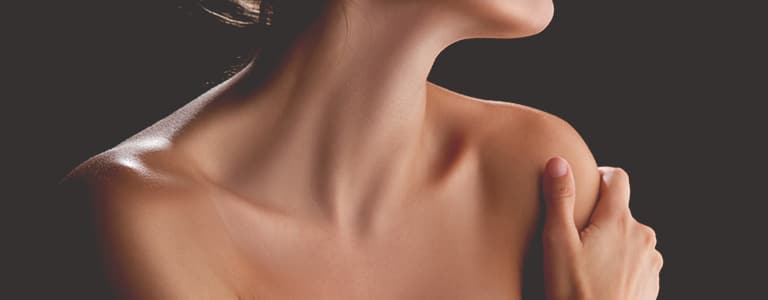Surgery of the Nose (Rhinoplasty)
What is a Rhinoplasty?
Rhinoplasty, or nose surgery, is one of the most common plastic surgery procedures. During a rhinoplasty, Dr. Roth is able to reshape, reduce or augment a patient’s nose for cosmetic, and sometimes functional, purposes. A rhinoplasty may be performed to correct a birth defect, to repair an injury, to improve breathing or simply to improve a patient’s appearance.
What Can Rhinoplasty Improve?
Rhinoplasty has several specific goals. Some facilitate breathing as well as improve facial appearance. During a rhinoplasty, Dr. Roth may make your appearance more pleasing to you by:
- Removing a hump on your nose
- Modifying the bridge of your nose
- Reshaping the tip of your nose
- Reshaping or resizing your nostrils
- Repairing your nose after an injury
- Increasing or decreasing the size of your nose
Ideal Candidates for Rhinoplasty
Candidates for rhinoplasty should be at least 13 years old since it is important that patients have finished their facial growth before proceeding with this surgery. Patients considering rhinoplasty should be in overall good health, should not be smokers, and should have realistic expectations about the outcome. Nose surgery is usually an outpatient procedure performed under IV sedation or general anesthesia and takes from 1 to 2 hours. There are two methods for performing a rhinoplasty: open and closed. Dr. Roth will choose the appropriate procedure for each individual patient.
How Is Nose Surgery Performed?
Rhinoplasty is usually an outpatient procedure performed under IV sedation or general anesthesia. It usually takes from 1 to 2 hours to complete. Surgeons use one of two techniques when performing nose surgery. In a closed rhinoplasty, incisions are made within the nostrils. In an open rhinoplasty, the incision is made across the columella, the tissue between the nostrils.
With both methods, the surgeon gently lifts the soft tissues covering the nose. The surgeon sculpts the bone and cartilage to the desired shape. Any additional cartilage needed to augment the nose can often be taken from the septum. If the patient has a deviated septum, the surgeon will adjust the septum and the inner structures of the nose to improve breathing. Then the tissues are re-draped and stitched closed. If the patient desires nostril reshaping, this is done as the final stage of rhinoplasty.
Recovery after Rhinoplasty
Immediately after surgery, your nose and eyes are usually bruised and swollen. Splints and some packing material will remain inside your nose for a few days. During this period, you may experience some nasal pain or a dull headache, as well as some bleeding and drainage from your nose. Most patients are comfortable enough to return to regular activities in about a week. Contact lenses can be worn immediately after the procedure, but glasses may need to be taped to your forehead or propped on your cheeks for up to seven weeks.
What Should I Expect After Nose Surgery?
Immediately after surgery, the patient’s nose and eyes are usually bruised and swollen. Splints and some packing material will remain inside the nose for a few days. Most patients feel like themselves within a few days and are able to return to regular activities in about a week. While you will be able to resume normal activities about a week after surgery, you will have to protect your nose while it heals by observing the following directives during the post-operative period:
- Avoid strenuous activities
- Take baths instead of showers
- Avoid blowing your nose
- Avoid constipation
- Avoid making exaggerated facial expressions
- Brush your teeth gently
- Avoid pulling clothing over your head
- Use sunscreen of SPF 30 or higher
- Limit dietary sodium
- Do not use ice packs
Are Most Patients Pleased With The Results Following Nose Surgery?
Patients with realistic goals for rhinoplasty are generally very happy with the new shape of their nose. The exact results depend on your nasal bone and cartilage structure, your facial shape, the thickness of your skin and your age. While you will look and feel fine within a week or two, you may have minimal swelling for as long as a year after the rhinoplasty procedure. Although your appearance may not be absolutely optimal until a year has passed, you will more than likely be extremely pleased with the results of your nose surgery soon after the procedure.
What Is Revision Rhinoplasty?
Revision, or secondary, rhinoplasty corrects deformities caused by a previous operation on the nose. It is a more difficult procedure to perform than primary rhinoplasty because there is less cartilage to work with and there may be scarring or tissue contracture. When performed by a highly skilled plastic surgeon, however, a revision rhinoplasty can improve both the appearance and the function of the nose.
Risks of Rhinoplasty
Complications arising from a rhinoplasty are rare and, when they do occur, usually minor. These may include infection, nosebleed, or a reaction to the anesthesia. Some few patients may experience recurring nosebleed or numbness in or around the nose. On rare occasions, the nasal septum may be perforated, but this can be repaired. In general, nose surgery is considered a very safe surgical procedure.
Will Insurance Cover Nose Surgery?
Insurance may cover the cost of your rhinoplasty if the surgery is being done as a reconstructive or medically necessary procedure. If you are having a rhinoplasty for purely cosmetic reasons, insurance will not cover the cost.

